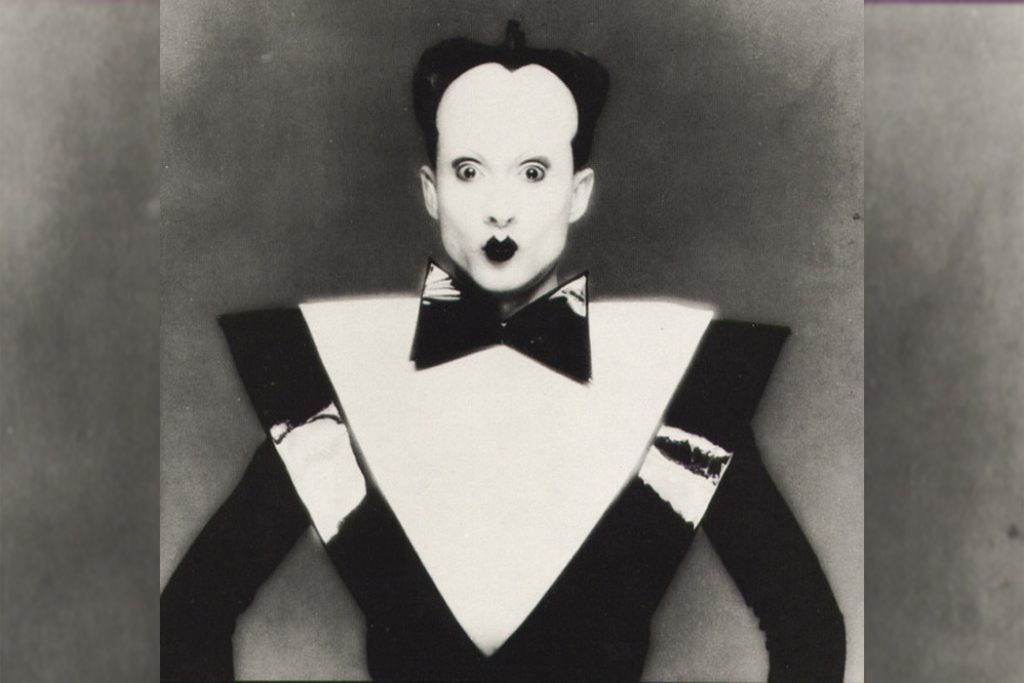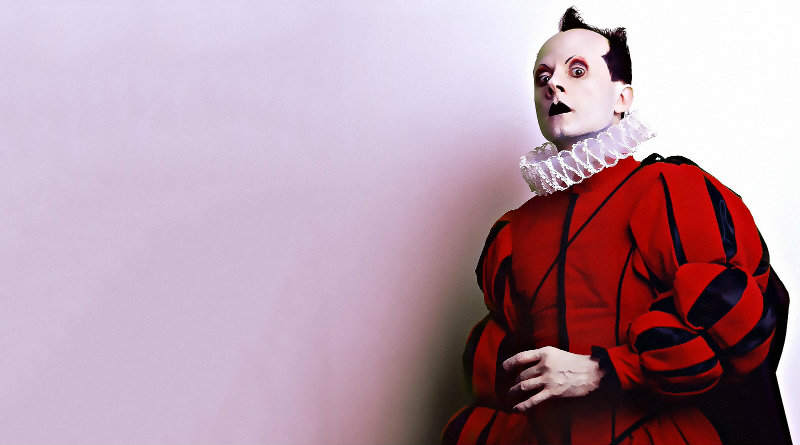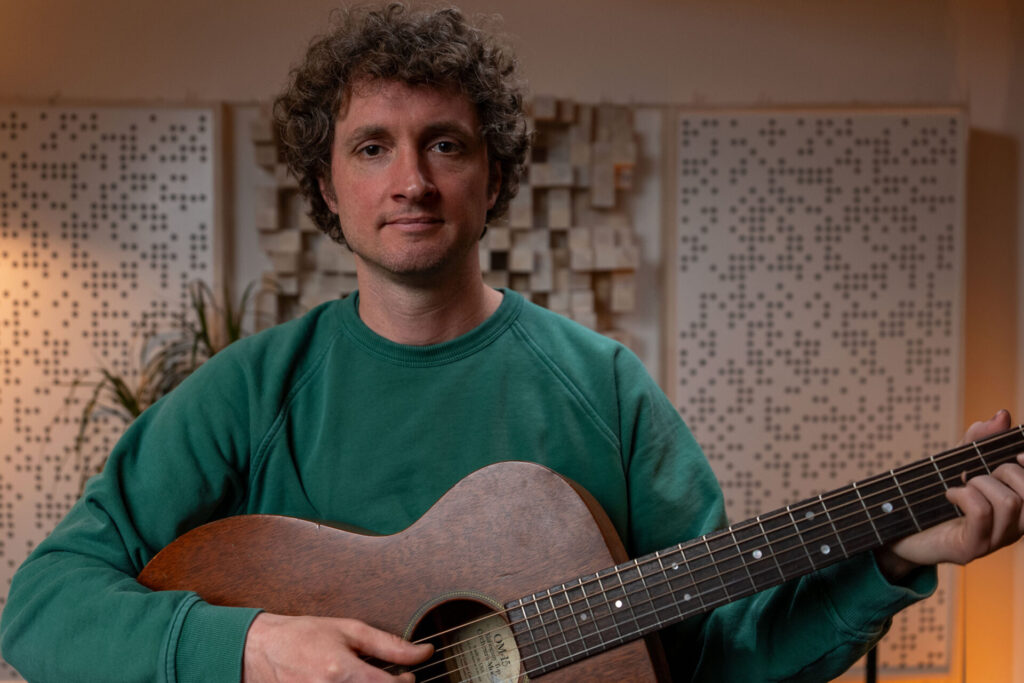
+ Welcome to Soundfly! We help curious musicians meet their goals with creative online courses. Whatever you want to learn, whenever you need to learn it. Subscribe now to start learning on the ’Fly.
Klaus Sperber (January 24, 1944 – August 6, 1983), known by his stage name, Klaus Nomi, was many of our favorite weirdos’ weirdo. He was one of my favorite weirdos. And he inspired David Bowie, Lady Gaga, and Jean-Michel Basquiat, to name only a few. He was a self-defined alien whose fashion and wild stage performance would have been enough to gain him notoriety alone, but whose effortlessly operatic and virtuosic range as a singer made him a legend.
Most people would perhaps see him as that freak in black and white. Some might even regard him as the first celebrity casualty of the AIDS epidemic. But Nomi was a quietly revolutionary part of the New York City art scene in the late ’70s and early ’80s. You may have never heard his music before today, but I guarantee that more than a few of your musical idols owe him a great deal for the doors he blew open in music, performance, and fashion, as a truly individual personality at a time when “scenes” dominated these disciplines.
Nomi was born in Bavaria in 1944 and moved to New York when he was 28, working as a pastry chef to pay the bills. He spent his free time doing off-Broadway theater work and smaller performances until he got his big(-ish) break as part of Irving Plaza’s New Wave Vaudeville Series. Most of the acts in the series regarded what they did as a form of “outsider theater,” and much of it was very tongue-in-cheek. One act painted pieces of foam-like guitars and mimed along to a recording. Yet when Nomi took the stage, he elevated the revue to something else entirely.
It was so good, in fact, that the MC had to frequently remind the audience that his voice was not a recording. Here’s one of his performances at the New Wave Vaudeville series at Irving Plaza in 1978.
The above performance was slightly absurd, of course (imagine seeing this live and having no prior expectations about this performer), yet it was incredibly moving and beautiful — a haunting reminder that art doesn’t have to make sense if it moves you.
He was a classically trained opera singer and his voice was almost as shocking to hear as his outfits were to see. Nomi’s operatic talents somehow blended perfectly with the hip-yet-fringe characters coming up in New York’s late-’70s art world, and his performances often featured cameos by Jean-Michel Basquiat and Keith Haring. His music was said to be “consistent, but not formulaic,” and he would show off his amazing vocal range by jumping octaves effortlessly. His sense of visual style and fashion could be described as baroque, but the influence of playwright and theatrical icon Bertolt Brecht would come to serve as a definitive touchstone.
Brecht believed in drawing attention to the artifice of a performance through heightening certain elements in order to better put forth his ideas. He wanted to alienate the audience so they could think critically about the play and its subject matter. One of the ideas that Nomi incorporated into his own act was Verfremdungseffekt (or, “the distancing effect”). This was achieved by “stripping the event of its self-evident, familiar, obvious quality and creating a sense of astonishment and curiosity about them” (Thomson).
Nomi is the epitome of Verfremdungseffekt. His famous “tuxedo suit” was made of rubbery plastic and had enormous, exaggerated shoulder pads. His voice would jump from octave to octave as if he were a synthesizer. His robotic movements implied he was not just trying to evoke “the future,” or early theatre, but some abstract unknowable in-between — something a little beyond the imagination.
When David Bowie saw Nomi perform in a bar in the Lower East Side, he immediately hired him to back him up at his upcoming Saturday Night Live performance in 1979.
This is the performance that propelled him into the American public consciousness. While the mainstream didn’t exactly welcome this black-and-white alien with open arms, his influence can still be seen today in fashion and theatrical performance, and his records have become elevated to cult status as a result of stagings like these.
Nomi inspired and pushed Bowie to go to new alien heights, and Bowie landed him a record deal with RCA records. Nomi’s self-titled debut album in 1981 featured a picture of him wearing his signature tuxedo suit on the cover. The song choices range from early opera music (like “The Cold Song”, adapted from Henry Purcell’s 1691 opera, King Arthur) to Kraftwerk-style synth pop (“The Nomi Song”) to a cover of Chubby Checker’s “The Twist.”
The album was very well received by Nomi’s fans and heralded today as a classic. It managed to fit into the synthesizer-driven music gaining popularity in the early ’80s, yet it also stood apart as arty. Much of the same can be said about his follow-up album, Simple Man.
Here’s his music video for the song “Simple Man” (1982) — there’s something so charming watching him parade around in a trench coat insisting he’s a “simple man.”
Unfortunately, by 1982 Nomi was succumbing to the effects of AIDS, known then as “the gay cancer.” His demise was, and still is, tragic. His was a life cut devastatingly too short. The ignorance surrounding HIV/AIDS in this era forced Nomi to die in a localized form of exile from his friends and family, and as a social pariah.
In the 2004 documentary The Nomi Song, his friend Man Parrish admitted that “a lot of people took off. They didn’t know how to deal with it. I didn’t know how to deal with it…. Is this something I could catch? Does he have typhoid or the plague? You hear rumors…. No one knew what was going on.”
Band member Page Wood recalled, “I remember seeing him at dinner and usually I’d go over and give Klaus a hug, and give him a European kiss on each cheek. And, I was just afraid to. I didn’t know if this was contagious…. I sort of went up to him and I hesitated, and he just put his hand on my chest and said ‘It’s alright, don’t worry about it,’ which made me start to tear up, and I think that was the last time that I saw him.”
Klaus Nomi died alone in Manhattan’s Memorial Sloan Kettering Cancer Center in August of 1983. No one visited him in the week before his death.
This performance of “The Cold Song” from earlier in 1983 is perhaps the quintessential Nomi media moment. By that year, his body had begun to deteriorate from AIDS. He was thinning and covered in lesions and he took to wearing a baroque collar on his neck to cover them up.
This single performance is powerful, passionate, and full of life despite him being so close to death. His vocalizing of the lyrics, “Let me freeze again to death,” late in the song should no doubt bring a tear to everyone’s eye. I interpret these images not as someone who is dying, but someone who has chosen to live until they are unable to go on.




